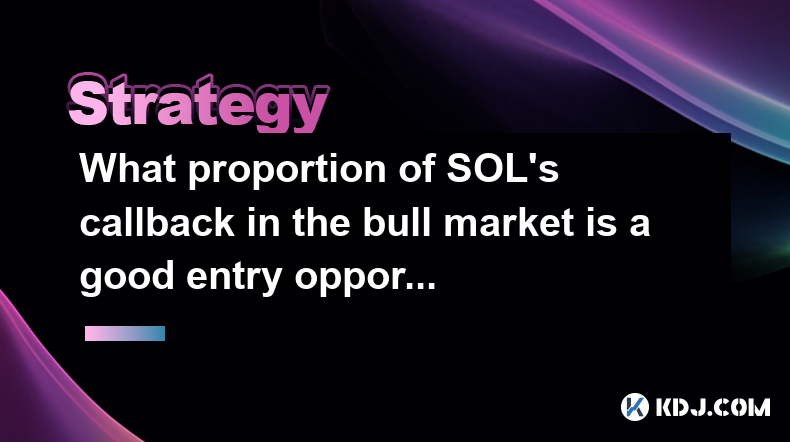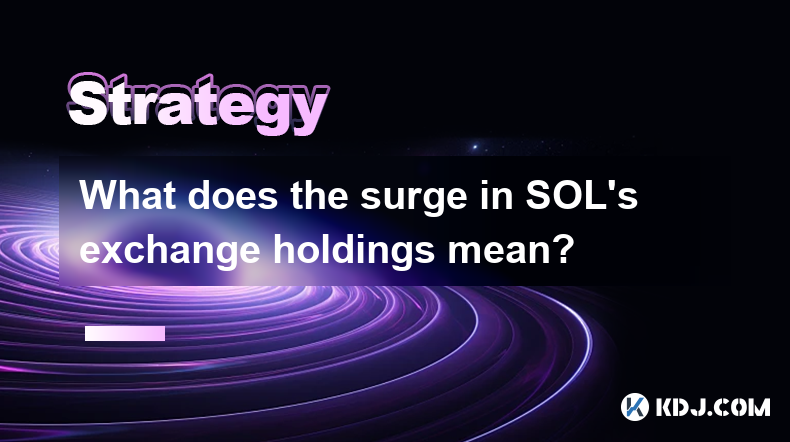-
 Bitcoin
Bitcoin $88,555.6766
1.18% -
 Ethereum
Ethereum $1,626.4043
-1.22% -
 Tether USDt
Tether USDt $0.9998
-0.01% -
 XRP
XRP $2.1018
-1.27% -
 BNB
BNB $605.8750
0.04% -
 Solana
Solana $140.3422
0.04% -
 USDC
USDC $0.9999
0.00% -
 Dogecoin
Dogecoin $0.1643
1.27% -
 TRON
TRON $0.2481
1.05% -
 Cardano
Cardano $0.6359
-1.63% -
 Chainlink
Chainlink $13.3216
-2.53% -
 UNUS SED LEO
UNUS SED LEO $9.1797
-2.79% -
 Avalanche
Avalanche $20.3681
-2.52% -
 Stellar
Stellar $0.2473
-4.43% -
 Sui
Sui $2.3043
2.50% -
 Shiba Inu
Shiba Inu $0.0...01257
-1.15% -
 Toncoin
Toncoin $2.9429
-3.48% -
 Hedera
Hedera $0.1738
0.16% -
 Bitcoin Cash
Bitcoin Cash $347.0587
1.49% -
 Hyperliquid
Hyperliquid $18.2576
-0.35% -
 Litecoin
Litecoin $79.8456
-0.89% -
 Polkadot
Polkadot $3.7809
-4.73% -
 Dai
Dai $0.9999
-0.01% -
 Bitget Token
Bitget Token $4.4439
-0.50% -
 Ethena USDe
Ethena USDe $0.9991
-0.01% -
 Pi
Pi $0.6313
-0.96% -
 Monero
Monero $216.2035
0.57% -
 Pepe
Pepe $0.0...08138
3.46% -
 Uniswap
Uniswap $5.3889
-1.68% -
 OKB
OKB $50.9281
-0.23%
How to reduce risks by building a pyramid?
Using a pyramid structure categorizes cryptocurrencies based on risk, enabling investors to diversify within risk levels, assess tolerance, and balance risk and return.
Feb 25, 2025 at 04:48 pm

Key Points:
- Understanding Risk in the Cryptocurrency Market
- The Pyramid Structure for Risk Management
- Diversification within the Pyramid Levels
- Risk Tolerance Assessment
- Balancing Risk with Return
How to Reduce Risks by Building a Pyramid?
1. Understanding Risk in the Cryptocurrency Market
The cryptocurrency market is inherently volatile and unpredictable, posing significant risks to investors. Factors such as regulatory changes, security breaches, and market manipulation can lead to price fluctuations and potential losses. It's crucial to recognize the risks involved and approach investments with caution.
2. The Pyramid Structure for Risk Management
A pyramid structure provides a framework for categorizing cryptocurrencies based on their risk profiles. The pyramid's base represents low-risk investments, while the higher levels represent progressively riskier assets. This structure allows investors to allocate their funds strategically and mitigate overall portfolio risk.
3. Diversification within the Pyramid Levels
Within each risk level of the pyramid, further diversification can be achieved by investing in a range of cryptocurrencies. By diversifying across different categories, such as stablecoins, large-cap coins, and small-cap tokens, investors can reduce exposure to specific asset classes or individual cryptocurrencies.
4. Risk Tolerance Assessment
Before building a pyramid portfolio, it's essential to assess personal risk tolerance. Factors such as investment goals, time horizon, and financial situation should be considered. Conservative investors may opt for a heavier allocation to low-risk cryptocurrencies, while more aggressive investors may consider higher allocations to higher-risk assets.
5. Balancing Risk with Return
The pyramid structure allows investors to balance risk and potential return. Lower-risk investments typically provide lower returns, while higher-risk assets offer the potential for higher profits but also carry greater volatility. By aligning the portfolio with individual risk tolerance, investors can strive for an optimal balance between risk and expected return.
FAQs:
Q: What are the advantages of using a pyramid structure for risk management?
- Reduces overall portfolio risk through diversification
- Provides a framework for categorizing cryptocurrencies based on their risk profiles
- Facilitates strategic allocation of funds to manage risk tolerance
Q: How often should I review and adjust my pyramid portfolio?
- Regularly monitor market conditions and cryptocurrencies' performance
- Make adjustments as needed based on changes in risk tolerance or market factors
Q: What are some examples of cryptocurrencies that can be placed at different levels of the pyramid?
- Low-risk: Stablecoins, Bitcoin (BTC), Ethereum (ETH)
- Medium-risk: Large-cap altcoins, such as Litecoin (LTC), Polkadot (DOT)
- High-risk: Small-cap altcoins, decentralized finance (DeFi) tokens, non-fungible tokens (NFTs)
Disclaimer:info@kdj.com
The information provided is not trading advice. kdj.com does not assume any responsibility for any investments made based on the information provided in this article. Cryptocurrencies are highly volatile and it is highly recommended that you invest with caution after thorough research!
If you believe that the content used on this website infringes your copyright, please contact us immediately (info@kdj.com) and we will delete it promptly.
- U.S. Digital Asset Firms Are Reportedly Considering Applying for Bank Charters and Licenses
- 2025-04-22 15:40:12
- OM Slides Deeper as Massive Token Burn Falls Flat
- 2025-04-22 15:40:12
- Ethereum Crashes, Its Share of the Overall Virtual Asset Market Fell Below 7%
- 2025-04-22 15:35:12
- Dogecoin Community Celebrates Dogeday 4/20, Buoyed by ETF Filing Buzz
- 2025-04-22 15:35:12
- ZetaChain Integrates Arbitrum to Offer Streamlined Universal App Usage
- 2025-04-22 15:30:12
- Deutsche Bank and Standard Chartered Are Expanding Their Crypto Operations in the United States
- 2025-04-22 15:30:12
Related knowledge

How to use trading volume to determine the buying and selling timing of BCH?
Apr 22,2025 at 04:14pm
Trading volume is a critical indicator that traders use to gauge the strength and direction of market trends, and it can be particularly useful when determining the buying and selling timing of Bitcoin Cash (BCH). By analyzing the trading volume, investors can gain insights into the market sentiment and make more informed decisions about when to enter o...

What proportion of SOL's callback in the bull market is a good entry opportunity?
Apr 22,2025 at 03:43pm
The question of what proportion of SOL's callback in a bull market represents a good entry opportunity is a nuanced one, requiring a deep dive into market dynamics, historical data, and risk management strategies. Let's explore this topic in detail. Understanding SOL and Bull MarketsSolana (SOL) is a high-performance blockchain platform known for its fa...

Can BCH's Willy indicator be bottomed out in the oversold area?
Apr 22,2025 at 02:56pm
Understanding the Willy IndicatorThe Willy indicator, also known as the Willy ratio, is a technical analysis tool used in the cryptocurrency market to assess the potential for a price reversal. It is calculated by dividing the current price of a cryptocurrency by its 200-day moving average. When the Willy indicator falls into the oversold area, it sugge...

What does the surge in SOL's exchange holdings mean?
Apr 22,2025 at 04:07pm
The recent surge in SOL's exchange holdings has sparked considerable interest and debate within the cryptocurrency community. SOL, the native token of the Solana blockchain, has seen a notable increase in the amount of tokens held on various cryptocurrency exchanges. This phenomenon can have several implications for the token's price, market sentiment, ...

What to do if SHIB's HODL wave indicator shows loose chips?
Apr 21,2025 at 03:07pm
If the SHIB's HODL wave indicator shows loose chips, it suggests that a significant portion of the SHIB holders are selling their tokens, potentially leading to increased volatility and a possible price drop. Understanding how to navigate this situation is crucial for any SHIB investor. This article will guide you through the steps to take when you noti...

Is it a risk that SHIB's derivatives position is 3 times that of the spot?
Apr 20,2025 at 12:35am
Is it a risk that SHIB's derivatives position is 3 times that of the spot? The cryptocurrency market is known for its volatility and high-risk nature, and Shiba Inu (SHIB) is no exception. One of the metrics that traders and investors closely monitor is the ratio of derivatives to spot positions. SHIB's derivatives position being three times that of the...

How to use trading volume to determine the buying and selling timing of BCH?
Apr 22,2025 at 04:14pm
Trading volume is a critical indicator that traders use to gauge the strength and direction of market trends, and it can be particularly useful when determining the buying and selling timing of Bitcoin Cash (BCH). By analyzing the trading volume, investors can gain insights into the market sentiment and make more informed decisions about when to enter o...

What proportion of SOL's callback in the bull market is a good entry opportunity?
Apr 22,2025 at 03:43pm
The question of what proportion of SOL's callback in a bull market represents a good entry opportunity is a nuanced one, requiring a deep dive into market dynamics, historical data, and risk management strategies. Let's explore this topic in detail. Understanding SOL and Bull MarketsSolana (SOL) is a high-performance blockchain platform known for its fa...

Can BCH's Willy indicator be bottomed out in the oversold area?
Apr 22,2025 at 02:56pm
Understanding the Willy IndicatorThe Willy indicator, also known as the Willy ratio, is a technical analysis tool used in the cryptocurrency market to assess the potential for a price reversal. It is calculated by dividing the current price of a cryptocurrency by its 200-day moving average. When the Willy indicator falls into the oversold area, it sugge...

What does the surge in SOL's exchange holdings mean?
Apr 22,2025 at 04:07pm
The recent surge in SOL's exchange holdings has sparked considerable interest and debate within the cryptocurrency community. SOL, the native token of the Solana blockchain, has seen a notable increase in the amount of tokens held on various cryptocurrency exchanges. This phenomenon can have several implications for the token's price, market sentiment, ...

What to do if SHIB's HODL wave indicator shows loose chips?
Apr 21,2025 at 03:07pm
If the SHIB's HODL wave indicator shows loose chips, it suggests that a significant portion of the SHIB holders are selling their tokens, potentially leading to increased volatility and a possible price drop. Understanding how to navigate this situation is crucial for any SHIB investor. This article will guide you through the steps to take when you noti...

Is it a risk that SHIB's derivatives position is 3 times that of the spot?
Apr 20,2025 at 12:35am
Is it a risk that SHIB's derivatives position is 3 times that of the spot? The cryptocurrency market is known for its volatility and high-risk nature, and Shiba Inu (SHIB) is no exception. One of the metrics that traders and investors closely monitor is the ratio of derivatives to spot positions. SHIB's derivatives position being three times that of the...
See all articles























































































